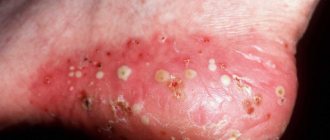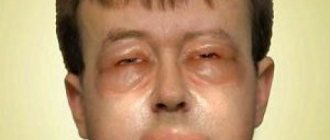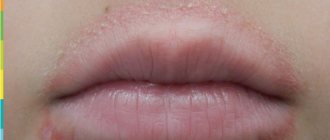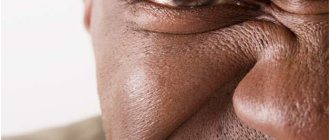If you develop pustular psoriasis, you may be referred to a board-certified dermatologist for treatment. If you have pustular (purulent) psoriasis , pus-filled bumps called pustules (pus-filled bumps) form.
Various psoriasis medications are used to treat pustules. A board-certified dermatologist will develop a treatment plan based on the following goals:
- Shrink (or clear) your pus-filled bumps
- Relieve your symptoms such as pain, itching, fever or chills
- Reduce the risk of complications
To achieve these goals, the dermatologist will consider:
- Type of pustular psoriasis
- Symptoms
- Age
- Other medical conditions
- Medicines you take to treat other conditions
- Flash intensity (mild, moderate or severe)
The type of pustular psoriasis you have is one of the most important factors because certain treatments must be combined with a specific type of psoriasis. Treatment options for each type of pustular psoriasis are described below.
Pustular psoriasis
What is pustular psoriasis?
This type of psoriasis causes reddish, scaly, pus-filled bumps.
Anyone who has pus-filled bumps on most of their body needs immediate medical attention. When widespread, pustular psoriasis can be life-threatening.
Pus-filled bumps are called pustules. They can form on the skin, inside the mouth, or under the nail.
About 24 to 48 hours after the pus-filled bumps appear, they join together and burst.
When the pus dries, the area becomes red and glazed. It often feels damp and soft.
New pustules may form on the red glazed area. They too will join together and break apart.
Types of analyzes
The main tests performed for psoriasis include:
- Skin biopsy, a piece of skin is examined to differentiate bacterial, fungal infections, and cancer.
- Complete blood count to detect leukocytosis and anemia.
- Erythrocyte sedimentation rate to determine the type of psoriasis. With pustulosis and erythroderma, the indicator remains normal.
- Uric acid test to rule out gout.
- An HIV antibody test is performed because sudden onset of psoriasis can be caused by HIV infection.
- Skin pH testing helps evaluate the effectiveness of the therapy.
If psoriasis affects the joints (arthropathic form), a rheumatoid factor test is performed. It allows you to differentiate rheumatoid arthritis, in which the protein level is increased. Contrast arthrography and pneumoarthrography also help to assess the degree of joint damage.
Generalized pustular psoriasis (GPP)
This type of pustular psoriasis causes widespread pus-filled bumps and requires immediate medical attention.
Symptoms of HPP include fever, chills, dehydration and rapid pulse.
Generalized pustular psoriasisRare and very serious, this type of psoriasis is a medical emergency. It starts with dry, red and soft skin. Within a few hours, widespread blisters filled with pus appear.
Treatment for HPP in adults: A dermatologist may prescribe one of the following medications to help get psoriasis under control.
- Oral retinoid
- Infliximab: This is a biologic that can quickly reduce inflammation (and bumps). Because patients often respond quickly, some experts believe it may be the first choice for severe HPP.
Because the above medications are potent, they may not be suitable for some patients. Another medication may be used to help bring psoriasis under control. Possible psoriasis medications that may be prescribed include:
- Apremilast
- Methotrexate
- Cyclosporine
- Another biologic such as adalimumab or etanercept
To get HPP under control, your dermatologist may prescribe two medications. Options include using etanercept (biologic) and cyclosporine, infliximab (biologic) and methotrexate, or infliximab followed by etanercept.
Knowing how to prescribe these combinations requires in-depth knowledge in the treatment of pustular psoriasis.
GPP in children: Although this is a rare condition, it can develop before someone turns 18 years old. When this happens, the first treatment options will follow.
- Cyclosporine : This may be the first choice because it acts quickly. It usually takes two to four weeks to see improvement.
- Etanercept : This is a type of medicine called a biologic. It is used to treat severe plaque psoriasis in children aged 4 to 17 years. Some experts believe that this may be the first choice for treating a child suffering from pustular psoriasis. It is usually prescribed twice a week for two months because it takes time to see improvement.
- Methotrexate : A low dose can be given to a child as young as 2 years of age. It often takes about two weeks to see improvement in a child, but it may take longer.
Other medications and treatments for psoriasis may also be an option, including phototherapy or other biological methods.
Impetigo herpetiformis
Developing only in pregnant women during the last trimester, this type of pustular psoriasis begins as pus-filled bumps that form on the inner thighs and groin. As the pustules connect and spread, pus-filled bumps cover a large, widespread area.
Pus-filled bumps can form in the mouth and under the nails.
Because this condition is rare, it is still unknown whether it is actually another type of pustular psoriasis. It could also be GPP.
While psoriasis can affect a large area of your body, treatment options are different from those listed above for GPP. For example, pregnant women should not take retinoids orally.
A treatment plan for impetigo herpetiformis often begins with psoriasis medication that you apply to your skin. A dermatologist may prescribe:
- Corticosteroid for skin
- Synthetic Vitamin D
If stronger treatment is needed to get your psoriasis under control, your dermatologist may prescribe:
- Phototherapy
If you have severe or life-threatening psoriasis, your dermatologist may prescribe one of the following remedies to get your psoriasis under control:
- Cyclosporine
- Biological treatment
To reduce possible side effects, your dermatologist may prescribe more than one medication. This may seem strange, but it can be an effective strategy when the doctor has experience in this area.
Diagnostic methods
The diagnosis and treatment of psoriasis is carried out by dermatologists. Initially, an external examination of the affected areas is carried out, and an anamnesis is collected. Sometimes the disease is similar to other diseases, especially in the first stage. If the hands and nails are affected, it is important to exclude the presence of fungal infections. The seborrheic type also requires differential diagnosis. Seborrheic eczema, pityriasis rosea and papular syphilis should also be excluded.
In case of active disease and large lesions, visual analysis of scrapings is used. In the process of scraping, peeling intensifies. In place of the removed scale, a smooth, thin film is visible. When mechanically applied, it moves away, revealing a moistened surface with droplets of blood.
In most cases, diagnosing psoriasis is not difficult; it does not even require testing; it is enough to examine the skin. However, the doctor must rule out an error in the diagnosis, determine the presence of concomitant diseases and other pathologies occurring against the background of psoriasis. For this purpose, the following diagnostic measures may be prescribed:
- Blood test to detect elevated levels of rheumatoid factor titers, ESR, proteins, leukocytosis, disorders characteristic of endocrine and biochemical pathologies.
- A skin biopsy is performed to confirm psoriasis, clarify its classification and exclude other skin diseases. The nature of the thickening of skin epidermal cells, the presence of Rete accumulation, immunocompetent and other cells are checked.
Laboratory tests are also important when prescribing therapy, to monitor the effectiveness of treatment, and to identify the causes and exacerbation of psoriasis.
Palmar pustular psoriasis
This type of pustular psoriasis results in pus-filled bumps on only the palms, soles, or both. Often one of the following is used to treat this type of pustular psoriasis:
- Corticosteroid (apply to skin)
- Synthetic Vitamin D (applied to skin)
- Phototherapy (light treatments)
- Corticosteroid and salicylic acid (apply to skin)
The treatments described above are often effective for treating mild illnesses. To enhance the effects of the medication you apply to your skin, your dermatologist may direct you to apply the medication and then cover it with gauze or other dressing.
If you have a lot of pus-filled bumps, your dermatologist may prescribe:
- Oral retinoid
- Biological agents
Advantages of taking tests in the laboratory of JSC "SZDCM"
- Easy registration and no queues.
- Anonymity and confidentiality of data.
- Accurate diagnostics thanks to the latest equipment.
- Quick availability of results.
- Tactful, qualified staff.
Laboratory terminals operate in St. Petersburg and the Leningrad region, Pskov, Veliky Novgorod and Kaliningrad. You can get tested at any of them, regardless of your place of registration and residence. The laboratories have a single database, which means you can get the result in any department, in a way convenient for you.
Continuous acrodermatitis Gallopo
This type of pustular psoriasis is rare. It causes pus-filled bumps on the fingertips, toes, or both. The disease can also develop under the nails.
Often, starting with one finger or toe, new pus-filled bumps may continue to appear. When this happens, new pustules may appear on more than just your fingers and toes. In rare cases, pus-filled bumps may slowly spread up the arms or legs.
Anyone who has pus-filled bumps on most of their skin needs immediate medical attention. When widespread, pustular psoriasis can be life-threatening.
The first choice for treating this type of pustular psoriasis often includes the following.
- Synthetic vitamin D combined with a strong corticosteroid: This combination is applied to the skin.
- PUVA: This is a type of light treatment that involves taking a medicine called psoralen before applying ultraviolet light to the affected skin.
Although the above describes what treatment may be used for each type of pustular psoriasis, your treatment plan may involve different medications. Your age, other medical conditions (if any) and overall health also play a key role in determining which treatment is best for you.
Literature used
Fitzpatrick J. “Pustular eruptions.” In: Fitzpatrick D.E. and Eling J.L. Secrets of dermatology. Hanley and Belfus, Inc., Philadelphia, 1996: 66-7.
Jeon K, Nakamura M, et al. “Generalized pustular psoriasis treated with apremilast in a patient with multiple comorbidities.” Representative for the JAAD case. 2017; 3(6): 495-7.
Robinson, Van Voorhis A.S. et al. “Treatment of pustular psoriasis: From the Medical Council of the National Psoriasis Foundation.” J Am Academy of Dermatology 2012; 67:279-88.
Source : https://www.aad.org/public/diseases/psoriasis/treatment/genitals/pustular
Posted by Dr. James Fitzpatrick
Causes
The exact cause of psoriasis is unknown. Genetic predisposition plays a significant role in its development: approximately 40% of patients with psoriasis or psoriatic arthritis have a family history of the disease (the presence of psoriasis in close blood relatives).
The development and course of the disease are also influenced by lifestyle, environmental factors and habits: smoking, excess weight, taking certain medications (beta blockers, lithium, antimalarial drugs), infections, alcohol, stress.










